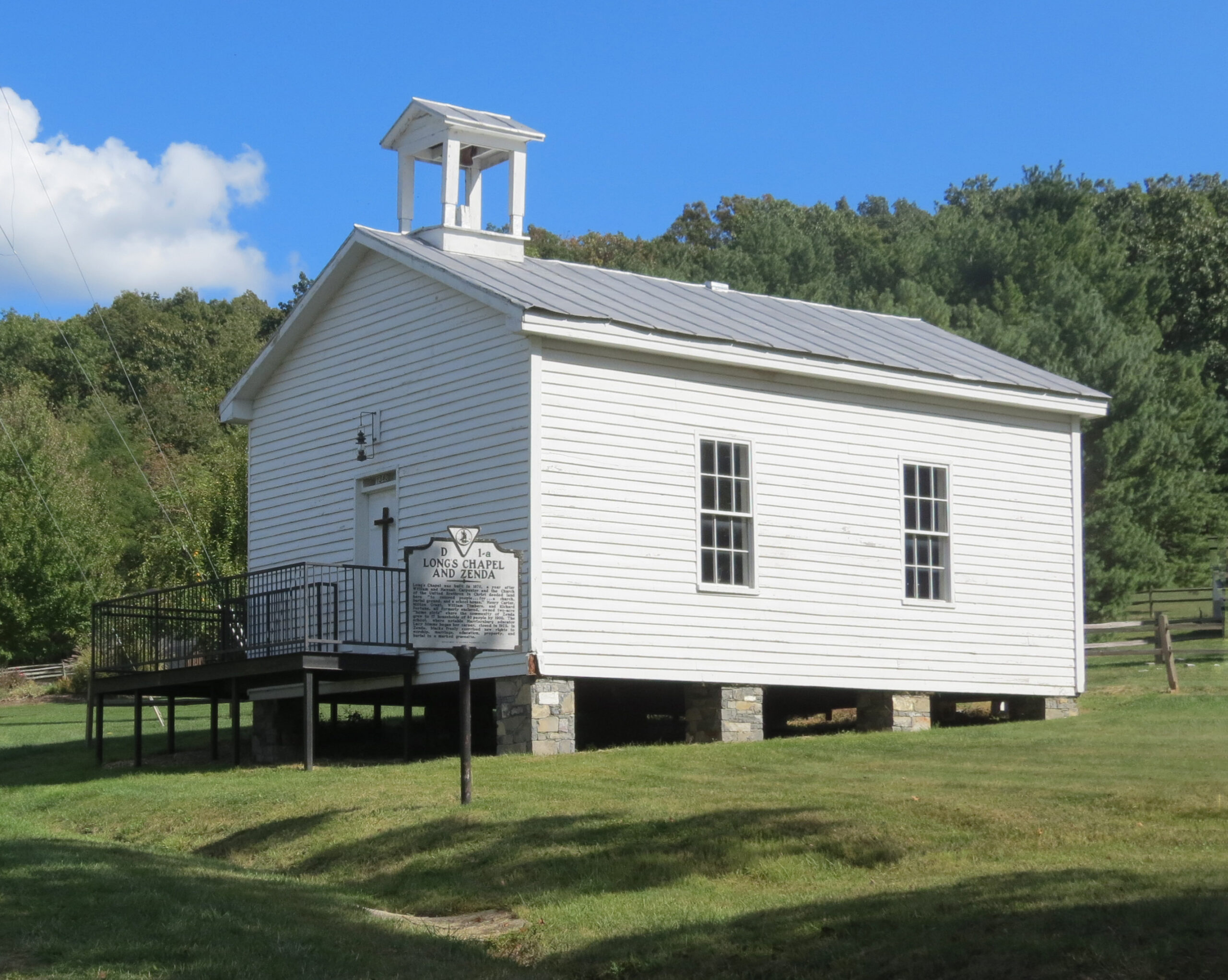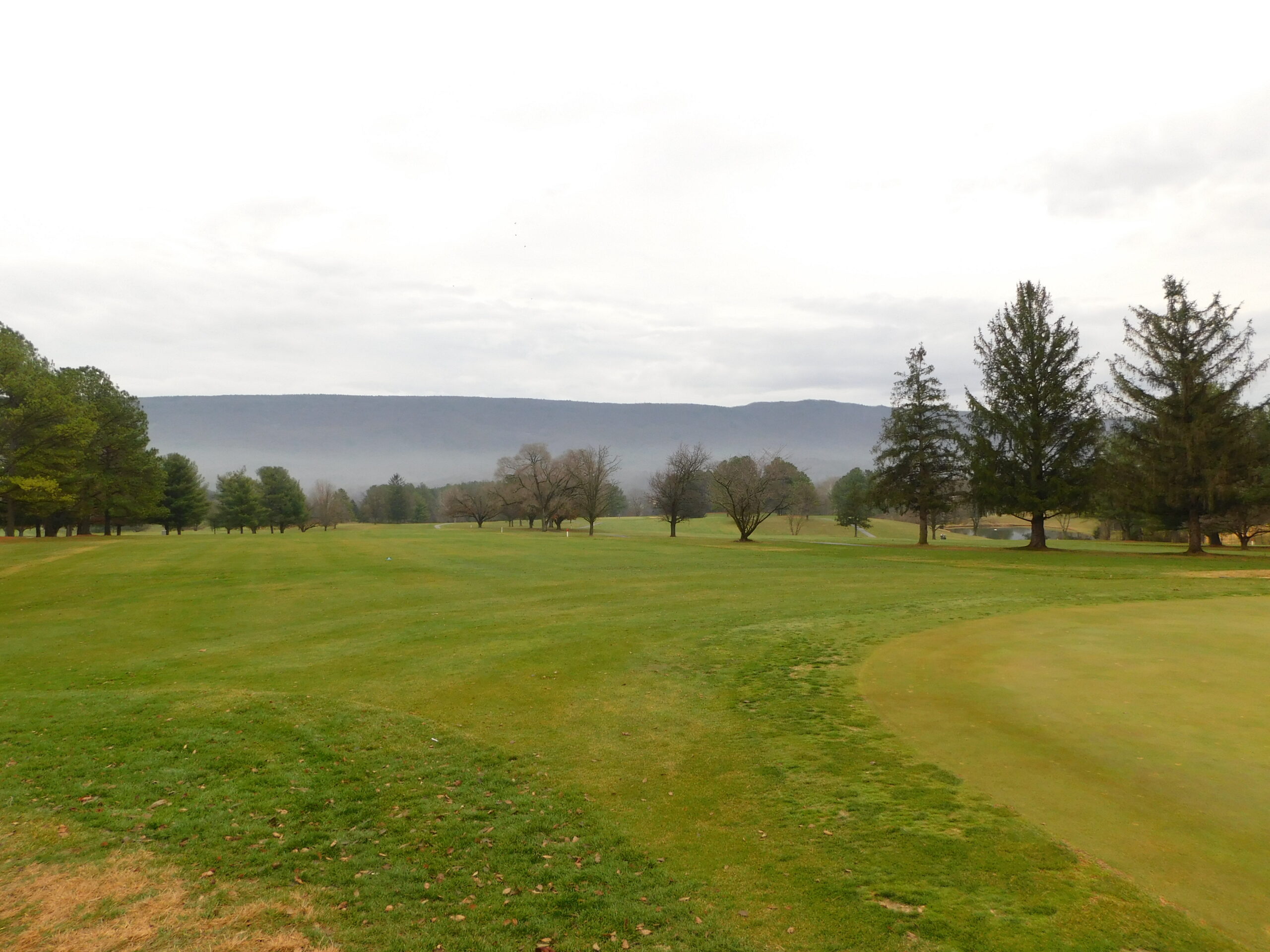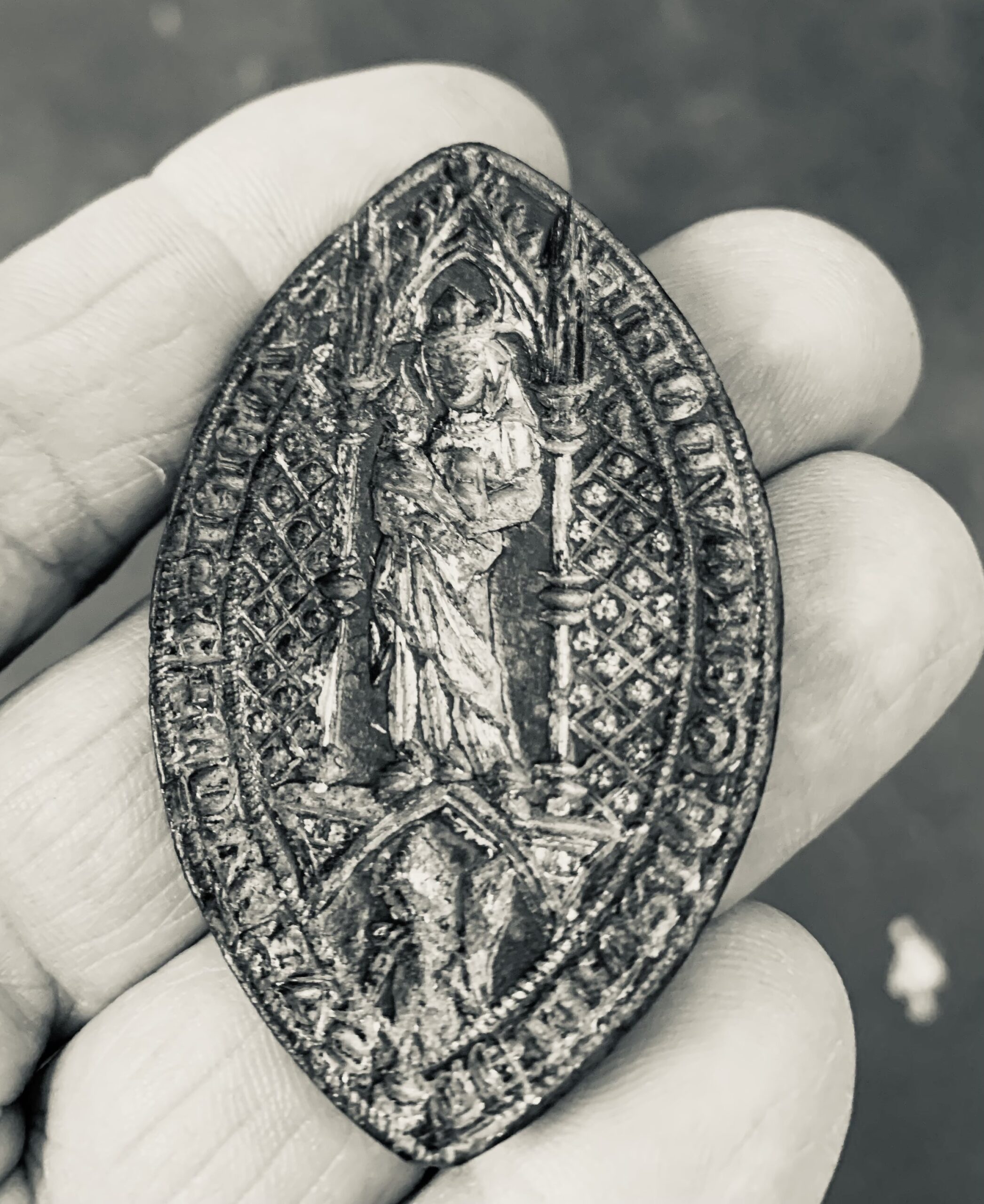14 New State Historical Highway Markers Approved, Dec. 2021
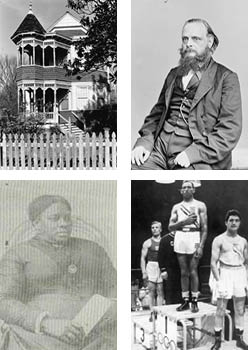
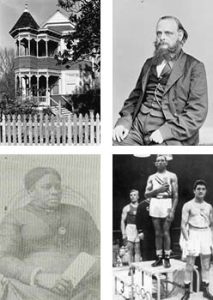
—The Va. Board of Historic Resources approved the markers during its quarterly meeting—
—Text of each marker reproduced below—
Fourteen new historical markers coming to roadsides in the commonwealth will highlight a nationally-recognized Lynchburg resident who saved antique and heirloom roses from extinction, two men who shaped Virginia’s post-Civil War constitution of 1869 which granted Black men the right to vote, and the “Martinsville Seven,” among other topics.
The forthcoming Lynchburg marker about Carl Porter Cato (1913-1996) spotlights this “nationally recognized rosarian,” who was known for collecting antique roses and saving them from extinction. A founder of the nationwide organization Heritage Roses Group, Cato identified several heirloom roses once believed to be lost and saved other rare roses by sending specimen cuttings to gardens across the U.S. Currently, Lynchburg’s Old City Cemetery showcases a collection of Cato’s antique roses.
Virginia’s Constitutional Convention of 1867-68 figures prominently in two forthcoming markers:
- In Clarke County, the marker “John C. Underwood (1809-1873)” recounts Underwood’s experience in Clarke where he settled in the early 1850s—but departed in 1856 after his anti-slavery activity drew harassment from fellow residents. In 1863, President Lincoln appointed Underwood a federal judge for Virginia’s eastern district. After the Civil War, Underwood advocated for equal rights for African Americans. He was elected president of the state’s constitutional convention that produced the document ratified in 1869 and known as the “Underwood Constitution.” It granted Black men the right to vote and established free public schools, among other democratic reforms.
- - Born enslaved, Samuel F. Kelso (ca.1825-1880), one of Lynchburg’s first Black teachers after the Civil War, also attended Virginia’s Constitutional Convention, to which he was elected to represent Campbell County and Lynchburg. Kelso introduced a resolution calling for free public education open to all on an equal basis. He also was a delegate to the National Convention of the Colored Men of America, which advocated for African Americans’ civil rights as guaranteed by the U.S. Constitution.
The Underwood Constitution was replaced in 1902 by a new state constitution that imposed new restrictions on voting and disenfranchised large numbers of African Americans and working-class whites.
The “Martinsville Seven” consisted of seven Black men convicted in 1949 by six all-white, all-male juries of the rape of a white woman. After the men were sentenced to death, NAACP attorneys appealed the sentences, submitting the first petition to the U.S. Supreme Court arguing that capital punishment had been disproportionately applied against African Americans in violation of the 14th Amendment. The case drew international attention and petitions for clemency but the Commonwealth of Virginia executed the men in February 1951, the most executions for a rape in U.S. history.
In 1977, the Supreme Court ruled that execution for rape was cruel and unusual punishment, and in August of 2021 Gov. Ralph Northam issued posthumous pardons to the Martinsville Seven.
Seven other new markers address topics in Virginia’s African American history. Two touch on civil rights:
- The marker “Norvel LaFallette Ray Lee (1924-1992)” relays that Lee, a native of Botetourt County who served in the Air Force, was arrested in 1948 in Covington for refusing to leave the whites-only section of a train car. The Virginia Supreme Court of Appeals reversed his conviction in 1949 on the grounds that the state could not enforce segregation laws on a local train if a passenger held a ticket for interstate travel. In 1952, Lee earned an Olympic gold medal in boxing.
- - In Fairfax County, the marker “Sullivan v. Little Hunting Park, Inc.” highlights a U.S. Supreme Court case. The suit stemmed from a racially-based denial by the board of Little Hunting Park to comply with a white member’s request to transfer pool membership to a Black family renting his house. In 1969, the Supreme Court ruled that the exclusion of an African American family from membership in a community recreational association constituted illegal housing discrimination. The case led to desegregation of neighborhood clubs across the U.S.
Reconstruction-era African American churches and a Christian mutual aid society are the focus of three markers:
- Union Run Baptist Church in Albemarle County took shape soon after the Civil War when the Rev. Robert Hughes and other freedmen organized the congregation, which purchased a nearby church building and re-erected it on land deeded to them in 1867. The church served as a school and a community center and the property as a burial ground.
- - Chief Cornerstone Baptist Church in Buckingham County was established by 1876. It arose on land sold to the congregation by a formerly enslaved married couple. Members worshipped under a brush arbor before building a log sanctuary. The property also provided a burial ground for the community.
- - Norfolk will see rise the marker “United Order of Tents,” about the United Order of Tents of J.R. Giddings and Jollifee Union, which was founded by and for Black women. In Norfolk, soon after the Civil War two formerly enslaved women organized the mutual aid society Tents’ Southern District #1. It provided financial assistance and burial insurance, established nursing homes, sponsored scholarships, and supported civil rights activists. Its membership nationwide grew to about 50,000 in the 20th.
The late 19th- and mid-20th century eras ground two other African American historical markers:
- In Hampton a marker will identify the one-time house of William H. Trusty (1863-1902). He moved with his family to Hampton around 1871, joining a large community of emancipated African Americans that became Phoebus. Trusty became an owner of commercial and residential real estate there. A civic leader, Trusty was elected to the Phoebus town council. His widow resided at the house until 1940.
- - East End High School in Mecklenburg County will be highlighted with a marker. It opened in 1953 to serve African American students during segregation. The school’s last class graduated in June 1969.
Two new markers recall places with Colonial-era roots:
- Rapidan Baptist Church in Madison County traces to January 1773. The congregation—like other Dissenters—faced prosecution for refusing to comply with the laws that privileged the Church of England, Virginia’s established church. In 1789, James Madison won the support of many local Baptists during his campaign for the U.S. House of Representatives by assuring the Rapidan church’s pastor that he would support a constitutional amendment guaranteeing religious freedom.
- - Layton’s Landing Wharf and Ferry in Essex County had a ferry operation as early as 1679. In the early 1700s, the Ley and Layton families ran a ferry, a tavern, and wharf there. By the mid-1700s, the community boasted a lively hub of commerce centering on a public tobacco warehouse. From the 1830s to 1937, Layton’s Wharf was a stop on a robust Baltimore to Fredericksburg steamboat route.
Another marker coming to Essex County will recall Saunders's Wharf, also a stop on the busy steamboat route linking Fredericksburg and Baltimore. Situated along the Rappahannock River, Saunders’s Wharf operated between the mid-1800s and 1937, experiencing a lively trade in agricultural products, livestock, raw materials, and manufactured goods, and the comings and goings of passengers.
After approval by the Board of Historic Resources, it can take upwards of three months or more before a new marker is ready for installation. The marker’s sponsor covers the required $1,770 manufacturing expenses for a new sign.
Virginia’s historical highway marker program began in 1927 with installation of the first markers along U.S. 1. It is considered the oldest such program in the nation. Currently there are more than 2,600 state markers, mostly maintained by the Virginia Department of Transportation, except in those localities outside of VDOT’s authority.
Full Text of Markers:
(VDOT must approve the proposed locations for each sign or public works in jurisdictions outside VDOT’s authority.)
Sponsor Markers – Diversity
Samuel F. Kelso (ca. 1825-1880)
Samuel Kelso, born into slavery, became one of Lynchburg’s first African American teachers after the Civil War. He taught at a freedmen’s school on 12th Street and was later a trustee of the all-Black Polk Street School. Kelso was elected to represent Campbell County, including Lynchburg, at Virginia’s Constitutional Convention of 1867-68. There he voted with radical reformers and introduced a resolution calling for free public education open to all on an equal basis. In 1869 he was a delegate to the National Convention of the Colored Men of America, which protested the exclusion of Black Americans from civil rights guaranteed by the U.S. Constitution. He was later a postal agent in Lynchburg.
Sponsor: Lynchburg City Schools Education Foundation
Locality: Lynchburg
Proposed Location: 915 Court Street
Union Run Baptist Church
Soon after the Civil War, the Rev. Robert Hughes (1821-1895) and other freedmen organized Union Branch Baptist Church, later known as Union Run Baptist Church. Spiritual life was vital to formerly enslaved African Americans, and establishing churches and creating communities were of primary importance. Thomas Jefferson Randolph of Edgehill deeded one acre to the church’s deacons in 1867. The congregation purchased the Limestone Church building and re-erected it on this site, where it also served as a school. The church became a cornerstone of the community. The Rev. Hughes, pastor for three decades, was interred in the churchyard, the final resting place of hundreds of community members.
Sponsor: Albemarle County Office of Equity and Inclusion
Locality: Albemarle County
Proposed Location: 3220 Keswick Road
Chief Cornerstone Baptist Church
African Americans had established Chief Cornerstone Baptist Church by 1876, during a period when many Black southerners worked to build independent community institutions in the wake of Emancipation. John and Harriet Gregory, who had formerly been enslaved, sold a half-acre of their property to the church’s trustees. Members worshiped under a brush arbor, an open-sided shelter with a brush roof and a mound of earth serving as a lectern, before building a log sanctuary. The church’s cemetery is the final resting place of many community members, including veterans of World War I, World War II, and the Korean War.
Sponsor: Chief Cornerstone Baptist Church
Locality: Buckingham County
Proposed Location: 4002 Bell Road, Dillwyn
William H. Trusty House
This ornate Queen Anne-style house was built in 1897 for William H. Trusty (1862-1902). Trusty, born in Prince George County, moved with his family to this area ca. 1871, joining a large community of emancipated African Americans seeking new opportunities. Trusty became an entrepreneur, an owner of commercial and residential real estate in Phoebus, and a civic leader. In 1901 he was elected to the Phoebus town council in the municipality’s first election after its incorporation. After Trusty’s death, his widow, Elberia Trusty, lived here until she died in 1940. The house, a reflection of Black achievement in the post-Emancipation years, is listed on the National Register of Historic Places.
Sponsor: Hampton Convention & Visitor Bureau
Locality: Hampton
Proposed Location: 76 West County St.
Martinsville Seven
Here in 1949, six all-white, all-male juries convicted seven black men of the rape of a white woman. All seven men were sentenced to death. On appeal, NAACP attorneys submitted the first petition to the U.S. Supreme Court arguing that capital punishment had been disproportionately applied against African Americans in violation of the 14th Amendment. Despite international attention and petitions for clemency, the Commonwealth of Virginia executed the men in Feb. 1951, the most executions for a rape in U.S. history. In 1977, the Supreme Court ruled that execution for rape was cruel and unusual punishment. Gov. Ralph Northam issued posthumous pardons to the Martinsville Seven on 31 Aug. 2021.
Sponsor: Eric Helms Monday
Locality: Martinsville
Proposed Location: 1 East Main St.
Norvel LaFallette Ray Lee (1924-1992)
Norvel Lee was born in Botetourt County and grew up two miles northeast of here. He joined the Army Air Forces in 1943, was trained in Tuskegee, AL, and later retired from the Air Force Reserve as a lieutenant colonel. In 1948, Lee was arrested in Covington for refusing to leave the whites-only section of a train car. The Virginia Supreme Court of Appeals reversed his conviction in 1949 on the grounds that the state could not enforce segregation laws on a local train if the passenger held a ticket for interstate travel. In 1952, Lee earned an Olympic gold medal in boxing in Helsinki, Finland. A graduate of Howard University, he was later a corrections officer and educator in Washington, D.C.
Sponsor: Nelson Harris
Locality: Botetourt County
Proposed Location: east side of Route 220 near intersection with Route 622
East End High School
East End High School opened near this location in Sept. 1953 to serve African American students during the segregation era. Mecklenburg County built the school with a grant from the Battle Fund, established under Gov. John S. Battle as Virginia’s first program for providing direct aid to localities for school construction. Students came from Mecklenburg County Training School, the Thyne Institute, and other schools in the eastern portion of the county. E. N. Taliaferro was East End’s only principal. The last class graduated on 5 June 1969. Mecklenburg County schools were fully desegregated that fall under a federal court order, and the building became a junior high.
Sponsor: East End High School Historical Highway Marker Committee
Locality: Mecklenburg County
Proposed Location: Intersection of SR 650 (Dockery Rd.) and Highways 1 and 58
Sponsor Markers
Layton’s Landing Wharf and Ferry
Two miles northeast on the Rappahannock River, at Coleman’s Town, George Southern was operating a ferry by 1679. In the early 1700s, the Ley and Layton families ran the ferry, an ordinary, and a wharf. By midcentury, the community had become a hub of commerce featuring a public tobacco warehouse, from which tobacco was inspected and shipped to Great Britain, and a Scottish merchant’s store. George Washington used the ferry several times in the 1750s and 60s. An effort to develop a town called Beaufort here ca. 1770 failed when the tobacco trade declined after the Revolutionary War. Layton’s Wharf was a stop on the Baltimore to Fredericksburg steamboat route from the 1830s until 1937.
Sponsor: Essex County Conservation Alliance
Locality: Essex County
Proposed Location: Intersection of Laytons Landing Road (Rte. 637) and Tidewater Trail (US 17)
Saunders’s Wharf
One mile north, on the Rappahannock River, is Saunders’s Wharf, a center of transportation and commerce from the mid-1800s until 1937. Steamboats on the busy route that linked Fredericksburg and Baltimore picked up crops, livestock, raw materials, and passengers here and deposited manufactured goods. John Saunders (d. 1867), a farmer and merchant who owned a store in nearby Loretto, built the wharf on his estate, later known as Wheatland. Saunders’s Wharf was one of several steamboat landings in Essex County. Others included Port Micou, Layton’s, Blandfield, Tappahannock, Ware’s, and Bowler’s. The construction of highways led to the river’s decline as a major avenue of trade.
Sponsor: Essex County Conservation Alliance
Locality: Essex County
Proposed Location: Intersection of Wheatland Road (Rte. 638) and Tidewater Trail (US 17)
Rapidan Baptist Church
Rapidan Baptist Church, formed by Elijah Craig, James Reed, Samuel Harriss, and John Waller, was constituted on 14 Jan. 1773. Members of this congregation, like other Dissenters, faced prosecution for refusing to comply with laws that privileged the Church of England, Virginia's established church. Craig was arrested while preaching, as were the other Rapidan organizers, and he continued to preach while jailed in Culpeper. James Madison won the support of many local Baptists in his 1789 campaign for the U.S. House of Representatives after assuring George Eve, Rapidan's pastor, that he would support a constitutional amendment guaranteeing religious freedom.
Sponsor: Rapidan Baptist Church
Locality: Madison County
Proposed Location: 150 Rapidan Church Lane
Carl Porter Cato (1913-1996)
Lynchburg resident Carl Cato, a nationally recognized rosarian, was best known for collecting antique roses and saving them from extinction. He was a founder of the Heritage Roses Group, a nationwide organization, and was an editor of its news magazine. Cato identified several heirloom roses once believed to be lost, including Cato’s Cluster and the spineless chestnut rose. He saved other rare roses by sending specimen cuttings to gardens across the U.S., including the National Arboretum in Washington, D.C., and the Huntington Botanical Gardens in CA. Cato helped establish the acclaimed collection of antique roses in Lynchburg’s Old City Cemetery, which features hundreds of varieties.
Sponsor: Bruce Christian
Locality: Lynchburg
Proposed Location: 402 Wise St.
DHR-initiated Markers
John C. Underwood (1809-1873)
John C. Underwood, an attorney from New York, settled near here early in the 1850s. Harassed for his antislavery activism and his work on behalf of the Republican Party, he left Virginia in 1856. Pres. Abraham Lincoln appointed him a federal judge for Virginia’s eastern district in 1863. An outspoken advocate of equal rights for African Americans after the Civil War, Underwood was elected president of Virginia’s Constitutional Convention of 1867–68. Among the convention’s 105 members were 24 African Americans. The “Underwood Constitution,” ratified in 1869, granted Black men the right to vote, established a system of free public schools, and secured other democratic reforms.
Sponsor: DHR
Locality: Clarke County
Proposed Location: on U.S. Route 50 near intersection with Mt. Carmel Road
United Order of Tents
The United Order of Tents of J.R. Giddings and Jollifee Union, founded by and for African American women, emerged from efforts to aid enslaved people who sought freedom along the Underground Railroad. Annetta M. Lane and Harriet R. Taylor, who had both been enslaved, formally organized the Tents’ Southern District #1 in Norfolk shortly after the Civil War. A Christian mutual aid society, the Tents provided financial assistance and burial insurance, established nursing homes, sponsored scholarships, supported civil rights activists, and aided mission work abroad. National membership grew to about 50,000 in the 20th century. This property became the headquarters of Southern District #1 in 1913.
Sponsor: DHR
Locality: City of Norfolk
Proposed Location: 1620 Church St.
Sullivan v. Little Hunting Park, Inc.
In 1965, Paul E. Sullivan rented one of his two nearby homes to Theodore R. Freeman Jr. When Sullivan attempted to transfer a pool membership to the Freeman family, the board of Little Hunting Park denied the request as the Freemans were Black. They also terminated the Sullivans’ membership for protesting. Both families filed a lawsuit in 1966 and pursued the case through several appeals. In Dec. 1969, the U.S. Supreme Court ruled in Sullivan v. Little Hunting Park, Inc., that the exclusion of an African American family from membership in a community recreational association constituted illegal housing discrimination. The case led to the desegregation of neighborhood clubs across the U.S.
Sponsor: DHR
Locality: Fairfax County
Proposed Location: near 7000 Canterbury Lane




